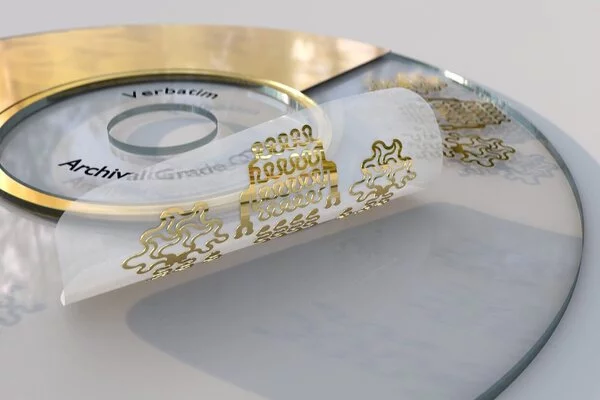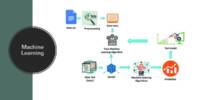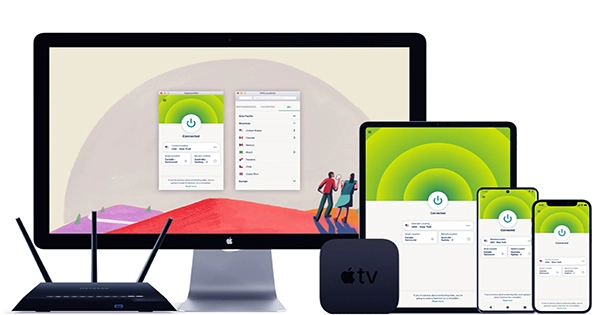New research from Binghamton University, State University of New York, suggests repurposing CDs as flexible biosensors that are inexpensive and simple to manufacture. Matthew Brown, Ph.D. ’22, and Assistant Professor Ahyeon Koh from the Department of Biomedical Engineering describe how a gold CD’s thin metallic layer can be separated from the rigid plastic and fashioned into sensors to monitor electrical activity in human hearts and muscles, as well as lactate, glucose, pH, and oxygen levels, in a paper published in Nature Communications. Bluetooth allows the sensors to communicate with a smartphone.
The fabrication takes 20 to 30 minutes without the use of toxic chemicals or expensive equipment, and it costs about $1.50 per device. “This sustainable approach to upcycling electronic waste provides an advantageous research-based waste stream that does not require cutting-edge microfabrication facilities, expensive materials, or high-caliber engineering skills,” according to the paper.
BME Professor Gretchen Mahler, Melissa Mendoza, Ph.D. ’22, and Louis Somma, MS ’22, as well as Assistant Professor Yeonsik Noh from the University of Massachusetts — Amherst, all contributed to the research. Nature Communications has included the article in its Editors’ Highlights, a list of the 50 best papers published in a given field in the previous year.
It’s essentially the same mechanism as picking up your hair on your clothes with sticky tape. We loosen the metal layer from the CD, then pick up that metal layer with tape and peel it off. After that, the thin layer is processed and made flexible.
Assistant Professor Ahyeon Koh
Koh said she first considered the idea of converting the CDs into sensors while doing postdoctoral research at the University of Illinois. “I had an idea: Maybe we could harvest the critical material from the CD and then upcycle to sensing systems,” she said. “I talked to Matt about my idea during the early stage of his dissertation research, and he wanted to continue this research.”
Brown looked into previous research on biosensors made from CDs, but he discovered that those sensors retained a rigid structure and had fewer applications than he and Koh hoped for. The first step is to use a chemical process and adhesive tape to remove the metallic coating from the plastic beneath.
“It’s essentially the same mechanism as picking up your hair on your clothes with sticky tape,” Koh explained. “We loosen the metal layer from the CD, then pick up that metal layer with tape and peel it off. After that, the thin layer is processed and made flexible.”

To create the sensors, Binghamton researchers used a Cricut cutter, an off-the-shelf machine for crafters that generally cuts designs from materials like paper, vinyl, card stock, and iron-on transfers. The flexible circuits then would be removed and stuck onto a person. With the help of a smartphone app, medical professionals or patients could get readings and track progress over time.
As Brown’s Ph.D. advisor, Koh is thrilled to see something she speculated could be possible almost a decade ago is now a reality. “I was so lucky to have Matt in the lab, because otherwise it would have stayed an idea from my postdoc research,” she said. “Some of my postdoc colleagues remember me talking about this idea to them, and they’re so excited about it.”
Brown is on his way to San Diego to work for Dexcom, which manufactures continuous glucose monitors, but he has some suggestions for improving CD-to-sensor technology: “We used gold CDs and would like to investigate silver-based CDs, which I believe are more common. How can we upcycle those types of CDs using the same method? We also want to see if we can use laser engraving instead of the fabric-based cutter to increase the upcycling speed even more.”
Koh, like her former student, would like to expand the CD-to-sensor research, possibly with the assistance of the campus community. “Perhaps we can set up a collection box on campus,” she suggested. “We could also have more generalized step-by-step instructions for making them in a day without any engineering knowledge. Anyone can make these types of sensors for their users. We want them to be more accessible, affordable, and easily distributed to the general public.”
















